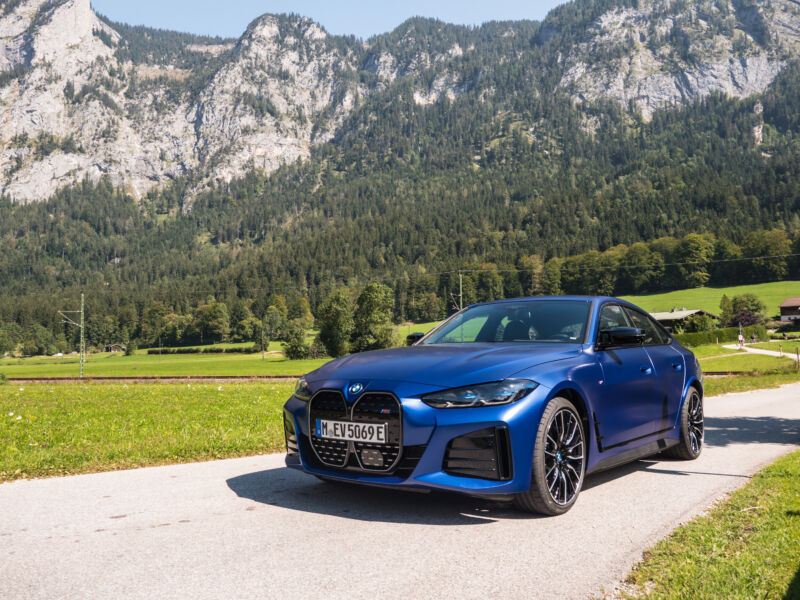
Enlarge / The BMW i4 M50 is the first BMW EV to benefit from the attention of the company’s M division.
Jonathan Gitlin
MUNICH—For all of my existence, the BMW 3 Series has been the default choice for an upmarket compact sedan with good driving dynamics. Or it was until a few years ago, when the Tesla Model 3 arrived and started to eat the 3 Series’ lunch. But now there is a battery electric vehicle that may turn things around for BMW, in the shape of a five-door fastback sedan called the i4.
After an early lead and then a bit of a stumble, BMW has recharged its electrification efforts. Last month, we went to Germany and drove the automaker’s newest flagship, a technology-laden sporty SUV called the iX. But the iX isn’t the only new BEV that BMW has been working on, and we got to spend a day with the range-topping $65,900 i4 M50 as well. The i4 is the first of BMW’s electric cars to be blessed by its legendary M division, and it comes with a pair of electric motors wrapped up in a sleek 4 Series Gran Coupe body. At the risk of spoiling the rest of this review, it’s really rather good.
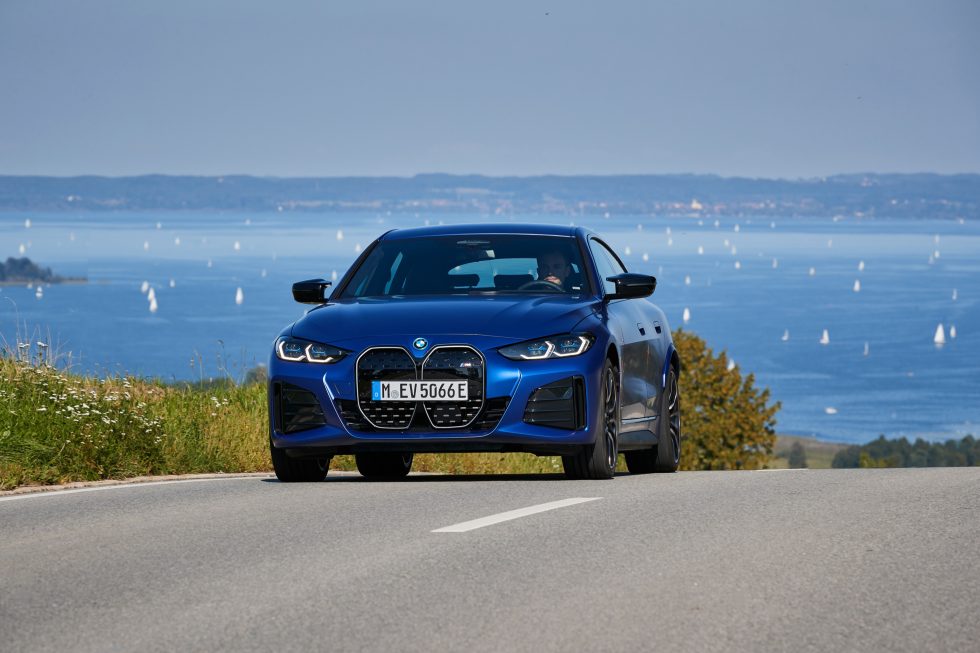
Enlarge / The i4 M50 may not be a Nürburgring monster like the M3, but it’s a fast and powerful electric sedan that rides well and features some clever technology.
BMW
Our first clue about the i4 came back in 2017, when BMW showed off an electric four-door concept called the i Vision Dynamics. Last year, the company followed up with something much closer to the production car, the Concept i4. In June, I got face time with—but didn’t drive—the entry-level car, the $55,400 i4 eDrive40. That version makes do with a single motor driving the rear wheels, giving it 300 miles (483 km) of range.
But the halo model is the M50, which uses an electrically excited synchronous motor at each axle to provide a combined output of 536 hp (400 kW) and 586 lb-ft (795 Nm)—well in excess of the current M3 and M4. Those figures make this the most powerful BMW EV to date. (The front motor is rated at a peak of 254 hp/190 kW and 317 lb-ft/430 Nm; the rear motor is rated at 308 hp/230 kW and 270 lb-ft/365 Nm.)
As befits a company called the Bavarian Motor Works, the drive units are made in-house at BMW’s Dingolfing factory near Munich. The units are compact and have a 50 percent higher power density than the drive unit in the i3. Being electrically excited, they eschew the use of rare earth materials in their construction. BMW says the motors have an efficiency of 93 percent.
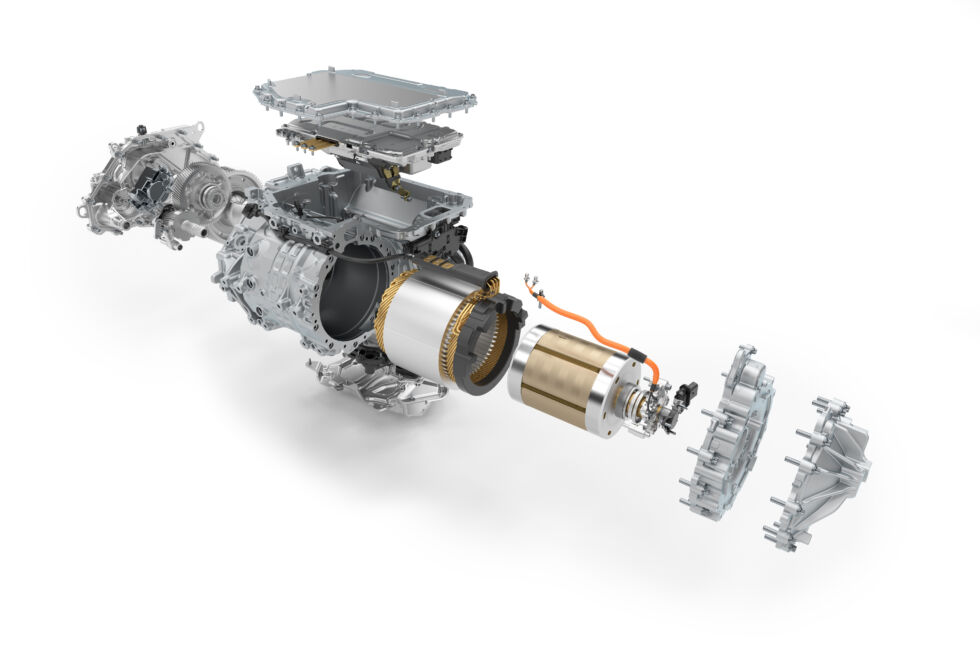
Enlarge / An exploded view of a BMW i4 drive unit. BMW is proud of being a motor manufacturer and designs and builds its electric motors in-house.
BMW
The motors are supplied with energy from a lithium-ion battery pack that’s right where you expect it to be: below the i4’s floor and between the front and rear axles. It’s made up of four 72-cell modules and another three 12-cell modules, for a total useable capacity of 80.7 kWh (gross capacity: 83.9 kWh).
The 4.3-inch (110-mm)-tall prismatic cells supplied by CATL and Samsung SDI have a 40 percent higher volumetric energy density than the cells in the outgoing BMW i3. BMW says the design and choice of materials let it recycle up to 90 percent of the battery if necessary.
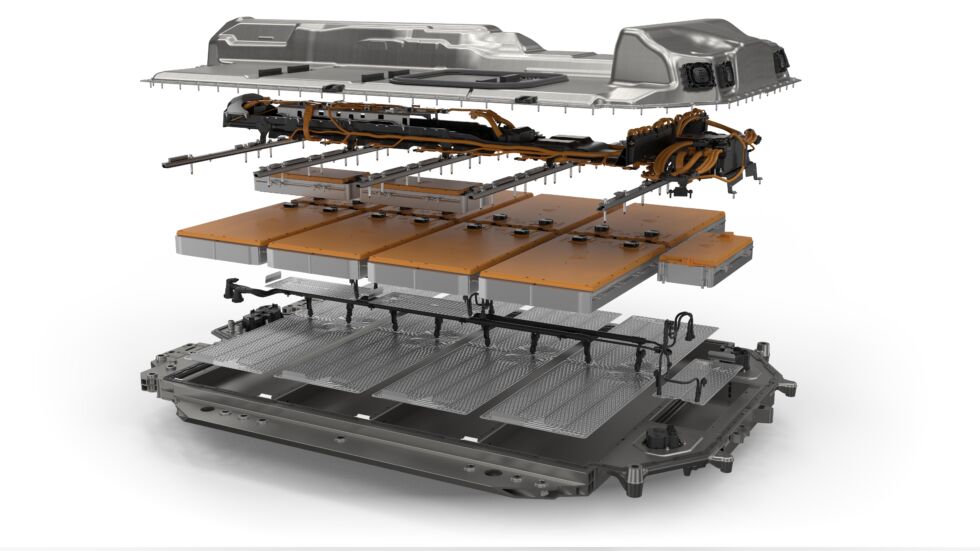
Enlarge / An exploded view of the BMW i4’s battery pack.
BMW
In the cheaper, less-powerful i4, the battery is good for a range of 300 miles. But between the i4 M50’s higher output and its bigger, wider wheels and tires, it loses some of this capacity for an estimated EPA range of 245 miles (394 km). (For our international audience, the WLTP range estimates, which bear much less resemblance to US driving styles, are 521 km for the M50 and 590 km for the eDrive40.)
Those range estimates look reasonable based on the energy consumption of our test i4 M50. Over the course of 267 miles (430 km) and 8 hours, the car used 2.6 miles/kWh (23.7 kWh/100 km), bearing in mind that those miles were all driven in Germany and include running at the car’s top speed of 140 mph (225 km) on derestricted autobahns.
The i4 will accept a DC fast charge of up to 200 kW via the industry-standard CCS plug. BMW says that charging from 10 to 80 percent with a 200 kW DC fast charger should take 31 minutes. For more regular, slow AC charging, expect the battery to take a little under eight hours to go from 10 to 100 percent state of charge thanks to the i4’s 11 kW onboard charger.
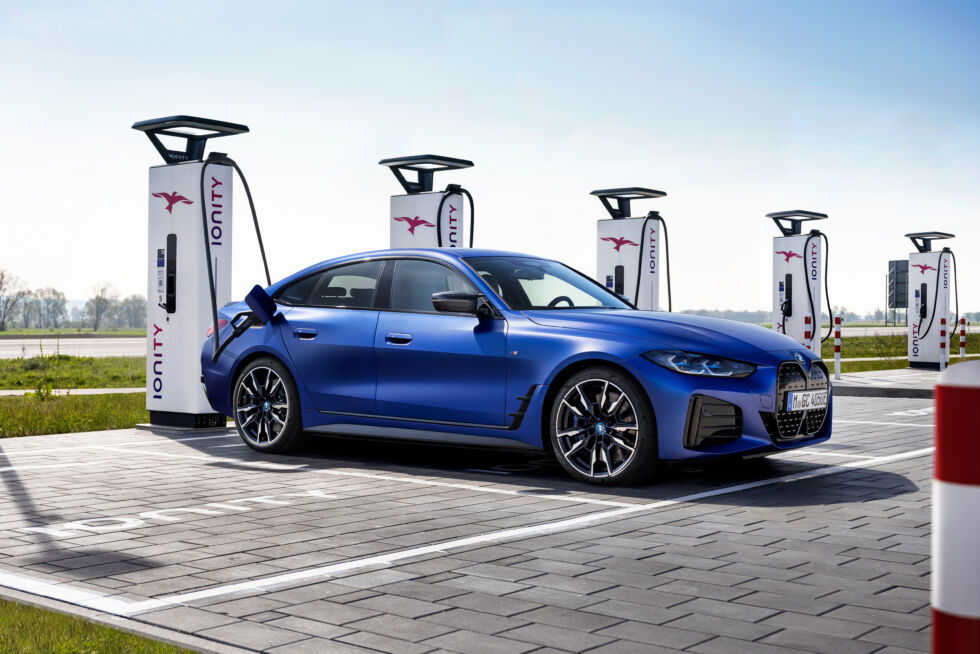
Enlarge / A 200 kW DC fast charger will take an i4’s battery from 10 to 80 percent state of charge in 31 minutes. An AC slow charge from 10 to 100 percent will take a little less than eight hours.
BMW

